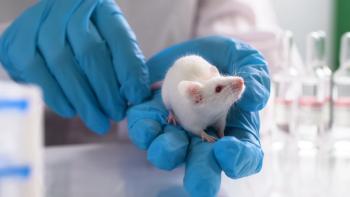
Can Sniffing Behavior Help Dogs Recognize Themselves?
How do dogs recognize themselves? A modified self-recognition test provides some answers.
Domestic dogs have excellent social cognition. For example, they can gather information by studying another’s gaze or communicative pointing. Such cognitive skills suggest, in theory, that dogs can distinguish between themselves and others, especially other dogs.
However, dogs have not performed well on the mirror self-recognition test, which assesses self-recognition in nonhuman animals. The test has 3 main components: (1) stimulus, (2) testing environment, and (3) animal’s mode of stimulus investigation. Other species, including great apes and dolphins, have passed the test when it was modified for that species; for example, the dolphins’ testing environment was altered to include a reflective surface.
Because dogs typically don’t self-engage with mirrors, Alexandra Horowitz, MD, PhD, an adjunct associate professor at Barnard College, recently modified the mirror self-recognition test to account for olfaction, a dog’s primary sense. Previous studies have reported how dogs use urine to learn about, and leave clues for, other dogs. Thus, urine investigation could reasonably be used to test canine self-recognition.
Using an “olfactory mirror” self-recognition test, Dr. Horowitz determined that dogs can recognize odors as being either their own or from themselves. Study results were published in
In the first experiment, Dr. Horowitz selected 36 pet dogs with previous nosework training. Owners collected urine from the study subject and, if present, from other household dogs (“familiar”). Dr. Horowitz also collected her own dog’s urine (“unknown”). Diseased spleen was used to modify the subjects’ urine, given dogs’ ability to detect diseased tissue with relative ease.
A research assistant prepared canisters with various odors. For each trial, dogs investigated a combination of 3 canisters for 30 seconds. Combinations differed between trials, with 1 canister being a decoy and the others as follows:
- Self-modified (SM) and Modified (M)
- Self (S) and Familiar (F)
- S and Unknown (O)
- SM and S
Owners did not interact with their dogs during testing. Trials were video recorded and analyzed for duration of canister investigation and number of canister approaches.
As expected, dogs spent significantly more time sniffing SM than S and made the most canister approaches during the SM/S trial, indicating that dogs recognize their own scent and become more interested in it when it’s modified.
In addition, dogs spent more time sniffing O than S, which was expected given that dogs use urine to learn about conspecifics. Time spent investigating S and F was roughly equal, suggesting familiarity with companion dog odors.
Interestingly, dogs spent similar amounts of time investigating SM and M, raising an important question: Was the dogs’ interest in the SM canister due to interest only in the modifier, or interest in the modifier plus their own changed odor?
To answer this question, Dr. Horowitz selected 12 other dogs for a second experiment with several changes. First, the modifier was changed to anise essential oil, whose detection requires more advanced nosework training. Second, dogs were presented with a new comparison—S and M.
In this new experiment, dogs spent more time investigating SM than M, suggesting, Dr. Horowitz wrote, that “the longer investigation time is not tied to an interest in the [modifier], per se, but rather an interest in the [modifier] when it appears in combination with or on the dog's own odor.” In addition, investigation times were similar between S and M, indicating that neither odor alone garners much interest.
Remaining Questions
Whether self-recognition tests are a good way to test an animal’s understanding of self, and whether such tests should require a “resultant effect,” remain debatable. Despite these open questions, Dr. Horowitz believes there is a clear need for species-specific modifications when testing an animal’s self-recognition abilities.
Dr. Pendergrass received her Doctor of Veterinary Medicine degree from the Virginia-Maryland College of Veterinary Medicine. Following veterinary school, she completed a postdoctoral fellowship at Emory University’s Yerkes National Primate Research Center. Dr. Pendergrass is the founder and owner of
Newsletter
From exam room tips to practice management insights, get trusted veterinary news delivered straight to your inbox—subscribe to dvm360.






